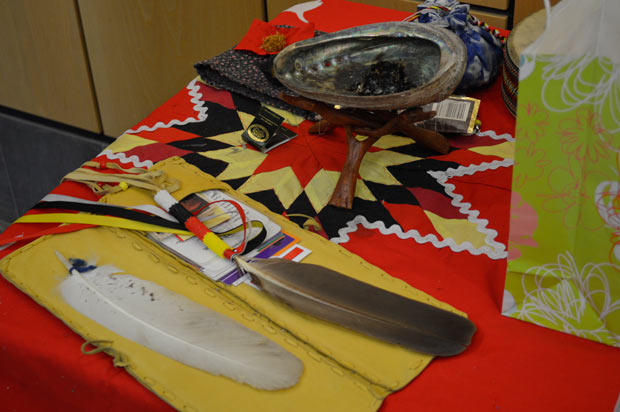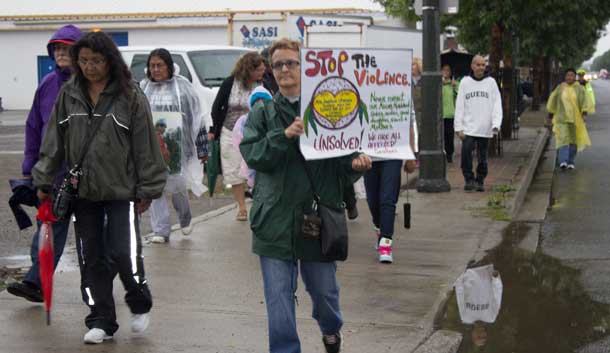

THUNDER BAY – The Ontario Federation of Indigenous Friendship Centres says that the RCMP have not done enough in their report on missing and murdered Aboriginal women.
The OFIF states, “On May 16, 2014 the RCMP released its report on missing and murdered Aboriginal Women. Upon review and greater reflection, the Ontario Federation of Indigenous Friendship Centres (OFIFC) commends the RCMP, but views the report lacking in statistical evidence leaving many questions unanswered in response to the 1,181 murdered or missing women in Canada over a 33-year period through to 2012”.
In a report released today the OFIFC state, “When the RCMP compiled this report, it appears that the use of data from all jurisdictions was employed to ensure that the rate of closure of cases of homicide involving Aboriginal women was similar to that of non-Aboriginal women. However, if one views the data provided, by the RCMPs’ own admission, the rate of successfully closing homicide cases of Aboriginal female victims falls well below the national average and well below that of other police jurisdictions. Stated in the report, the RCMP delivered statistics to the UN Committee for Elimination of Discrimination Against Women (CEDAW) in September 2013.
“The RCMP has now publically stated that the statistics they provided CEDAW were only those cases within their jurisdiction. Therefore, in September 2013 there were 327 cases of homicide within the RCMPs’ jurisdiction where the victim was known to be Aboriginal. In the report, of the outstanding homicide cases to be solved, 68 of them under RCMP jurisdiction. Therefore the RCMP has 68 outstanding homicide cases of the 327 cases within their jurisdiction suggesting that the RCMP only has a 79% closure rate in cases of homicide involving Aboriginal females. The RCMP is closing far fewer cases involving Aboriginal female victims of homicide than other police jurisdictions and steps that the RCMP will take to remedy this have not been included within this report.”Missing from this report is any substantial or meaningful reporting on missing Aboriginal women. There is no data included as to the rates of Aboriginal women going missing in comparison to non-Aboriginal women. The report lacks any and all information concerning steps taken within police jurisdictions to locate missing Aboriginal women. The report further has no comparative data when it comes to missing Aboriginal women”.
Reviewing the report and comparing data with an analysis of data obtained by the OFIFC and its policy unit, the OFIFC concludes there are several inconsistencies and gaps in key areas. Namely, data on Aboriginal women missing and murdered; national analysis based on provincial data; and steps currently taken by the RCMP to resolve the 20% of cases still unsolved.
The data presented highlights risk factors, trends, location, age, social status, and even occupation, yet, the data does not present trends on solved rates of homicide. As reported, Aboriginal female victims of homicide take longer to solve than those of non-Aboriginal victims and that while non-Aboriginal female homicide is in decline, Aboriginal female homicide is steadily rising. There remains little data on the unsolved cases of Aboriginal female homicide within the report and this gives little closure for families and friends of loved ones missing or murdered.
There is no data included as to the rates of Aboriginal women going missing in comparison to non-Aboriginal women. There is no data available on when and how someone is reported missing. There remains gaps in information concerning process and protocol for missing persons, specifically Aboriginal women, nor an understanding of the possible risk factors associated with becoming labelled as ‘missing’. Given that over 60% of the cases of missing Aboriginal women are of unknown circumstances or circumstances where foul play is suspected, additional data is required to understand policing and institutional response in locating missing Aboriginal women. The data that has been provided by the RCMP is negligent.
The report also lacks any and all information concerning steps taken within police jurisdictions to locate missing Aboriginal women.
Additionally, in order to understand fully the data concerning missing Aboriginal women, it needs to be broken down by province and jurisdiction. Given the revelation of the rise of domestic human trafficking in Canada by means of UNICEF Canada’s study highlighting that Aboriginal women, girls, and young boys are most likely to be trafficked within Canada, a greater understanding of the possible interconnection between missing Aboriginal women and human trafficking is required.
As one of few organizations nationally that provides education and awareness to end violence against Aboriginal women and girls, the OFIFC supports the continued call for a national inquiry. It also applauds the interest this report and the issue of murdered and missing Aboriginal women and girls has garnered with the Canadian media and asks for the focus to continue.











